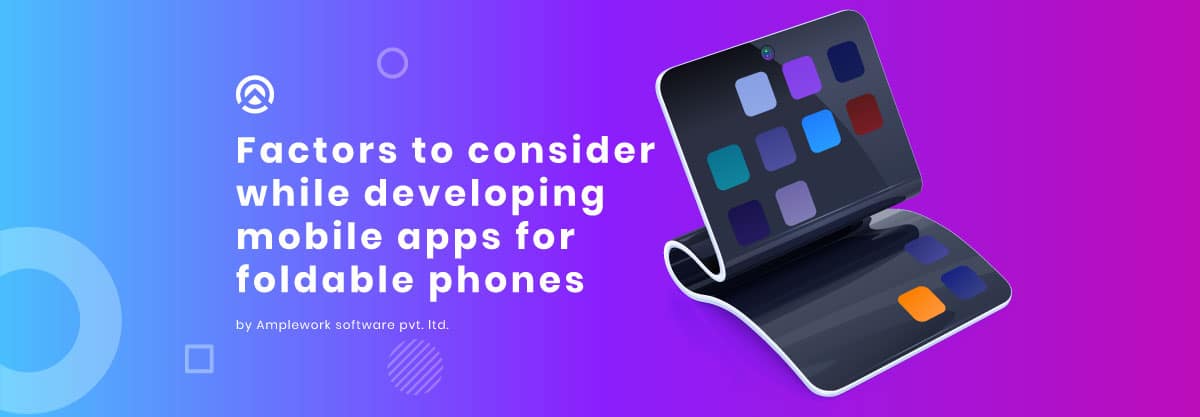The advent of foldable mobile phones in 2019 makes the year landmark. Companies like Samsung, Motorola, Microsoft, Huawei, and LG have released a wide range of smartphones. However, they haven’t become an instant hit in the market probably due to the high cost. It may take more time for creating a better position in the smartphones segment when the user will look for larger screens. The foldable smartphones are made of flexible display technologies for incorporating visual interpretation. In recent years it has been observed that people are getting inclined towards flexible displays such as tablets, smartphones, electronic paper technology, etc.
These foldable phones would have different alignments and aspects ratios with higher resolutions in comparison to regular smartphones. Buying these smartphones would also expect a similar and high-quality experience from the apps they are using. This raises expectations from mobile application developers to develop apps for foldable screens.
It apparently seems that it is just dividing the app design into two screens, but there is a much more massive impact. The developers would have more space to create detailed and immersive mobile apps on foldable phones.
- The OTT or video streaming apps can leverage to display videos in better resolution, with more clarity and giving extra controls or features in the app.
- The calendar apps which used to display a week can show the entire month on a screen.
- Banking apps will open multiple account information in the multi-window app screen in place of the initial one
- The gaming applications will also provide a better gaming experience.
Factors to consider while develops apps for foldable phones
Re-sizable

The foremost observing feature of foldable phones is that their screen size is comparatively more than traditional smartphones. Henceforth, as a mobile application developer, you need to be sure that the app should work fine with both the size of the normal screen and also with a multi-mode screen.
Two states accountability

The difference between a conventional phone and the foldable phone is not only about screen size. But there are two ways you can use a foldable phone; with a folded screen or with unfolded screens. It also affects the features and functionalities of the app. You need to identify what features you need to show at which screen.
Read more: Top 9 Backend Frameworks for Web App Development in 2023
Aspect Ratio

The aspect ratio can vary for different foldable phones. Some foldable phones come with high, long, and thin screens, while there are many with bulkier and shorter screens. It is essential that you test your app for various screen ratios. This will ensure that your app is compatible with as many devices as possible.
Multi-resume

The most annoying thing is that when you are working on applications and find a notification on another app, then you have to stop using it for opening that app. But those were the days of the past, with multi-window mode on the foldable mobile phones you can combat this issue. You can easily work on dual or multi-apps in this.
Multi-display

Multi-display is only supported in the Android 10 version. If an app is running on multiple display devices, users can quickly transfer them from one display to another. This also applies to multi-resume multi-screen scenarios.
Read more: Top 10 AI Content Detector Tools & Extension Free in 2023
Final Words
Foldable mobile phones can be the future, hence we need to prepare in advance. At Amplework Software, the best mobile app development company, we develop applications that are suitable for every screen size and device.
